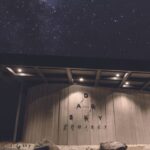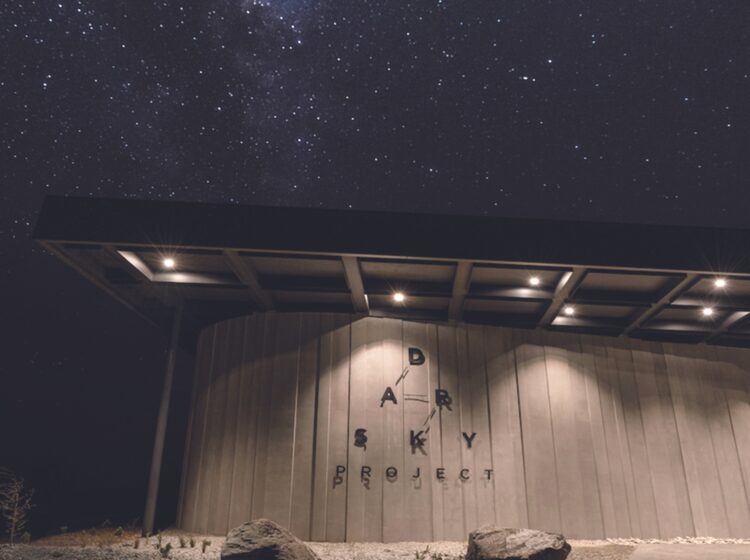
Unlike the hazy skies that pervade most nations, New Zealand boasts of an exquisite, uncharted mirror of a night sky
For most urban dwellers around the world, notably in countries like India, seeing a dark sky in the night is an increasingly rare phenonmenon and a star-lit night sky seems to belong only to photos in coffee table books or on the internet.
As if the dust, automotive emissions and other forms of air pollution were not enough, cities across the world, especially in India, also suffer from yet another form of pollution that essentially makes seeing stars a distinct challenge, the city lights. As most cities are lit up through the night, the combination of light, dust and other pollutants in the air make it impossible to observe the stars from the cities, even with a telescope.
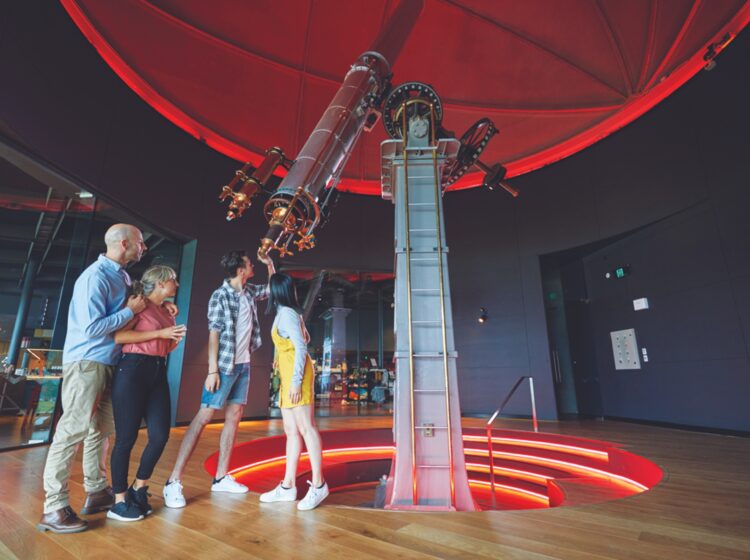
The Victorian era Brashear telescope (Photo: Dark Sky Project)
Spotting an opportunity to develop a niche, some countries like Chile and New Zealand that offer clean air and clear skies have begun to develop and position themselves as the world’s best astrotourism destinations, and not without merit.
New Zealand has gone one step ahead of Chile and even launched a unique Dark Sky project to obtain a certification to be designated as International Dark Sky Place. New Zealand’s tiny neighbour, Niue, which has just over 1600 people living on a coral island measuring 260 sqkm obtained its own certification in 2020.
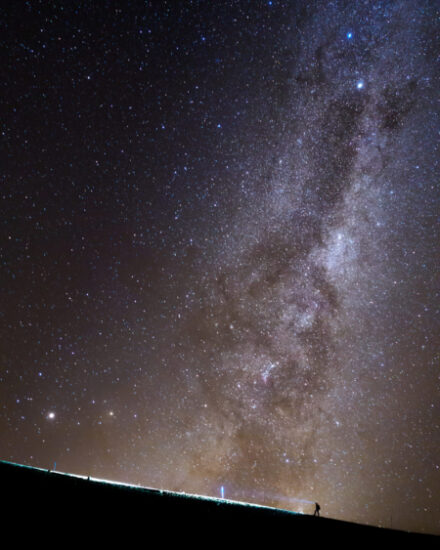
Milky Way on Tongariro Alpine crossing (Photo: Zhi Yuen Yap)
Rangi Matamua is a pioneering Māori scholar who has revolutionised understanding of Māori astronomy and in particular, Matariki and who has worked to position New Zealand as a leader in this space. As a member of S.M.A.R.T. (the society for Māori Astronomy) and a professor of Mātauranga Māori at Massey University, Rangi has played a crucial role in illuminating and educating both national and international communities about astronomy.
“Māori culture, the night sky, and astronomical bodies are inseparable, they are linked together. So, if we are talking about the preservation of culture, one of the elements that needs to be preserved is the Dark Sky. There is a depth and richness in that knowledge that it is really important. If you lose the ability to see the objects of the night sky, you diminish the culture,” says Matamua.
“Since the dawn of humanity, we have looked into the cosmos to understand who we are, where we are, and what we are. The cosmos and the stars underpin our understanding of our world and everything in it. The night sky is such an important element to our well-being, it gives us a sense of scale and it helps us connect with something greater than ourselves – that is really important for calming our minds, and for us helping spend quiet moments in contemplation,” he adds.
“From the darkest depths of the night we become enlightened”
Unlike the hazy skies that pervade most nations, New Zealand boasts of an exquisite, uncharted mirror of a night sky glittering in pinpricked stars. In New Zealand’s North Island, 74 pc, and South Island, 93 pc of the night skies are deemed ‘pristine or degraded only near the horizon’.
Unusually vivid Southern Lights, or Aurora Australis gleam over the New Zealand sky erupting in scintillating play of violet, blue, green, pink and red hues of wonder. This happens when streams of charged particles from the Sun survive collision and effuse a neon glow on coming into contact with Earth’s upper atmospheric layers. The best viewing season for Southern Lights is from March through September. However, this enigmatic southern counterpart of the Northern Lights is a rare celestial occurrence that needs to be protected. The nation is thus putting its best foot forward to ensure the region’s dark skies would not degrade, an issue already impacting 80 pc of the people worldwide.
‘‘The Dark Sky project began life at Earth & Sky Limited, a small tourism enterprise founded by Graeme Murray and Hide Ozawa. The story is Hide once said to Graeme ‘If we had a sky like this in Japan, we would create a park to protect it’ and so began the idea of a tourism business that connected visitors with the dark sky reserve. We accessed a deep connection with Tatai Arorangi (Māori Astronomy) and now have the privilege of sharing this with visitors from around the world,’’ Jared Simcox, General Manager of Dark Sky Project tells India Outbound.

Lake Tekapo at night (Photo: Rachel Gillespie)
Based in the Aoraki Mackenzie International Dark Sky Reserve, the fundamental ideas behind this distinguished initiative is the development of astrotourism in the region that ignites in visitors a passion for the untainted night skies.
“There are a number of research projects underway right now about the biodiversity benefits of dark sky reserves. On a practical level, all animals are sensitive to artificial light, including us, so being in a dark sky reserve is only a good thing for us, and the other animals that inhabit the land within the reserve! And astrotourism is a tremendous growth market, it is exciting and people are advocating for more dark sky reserves,” he adds.
Both operating bases of the project are located in the Aoraki Mackenzie International Dark Sky Reserve, which also serves as one of the largest and darkest ones in the world. Wairarapa Dark Sky Reserve is New Zealand’s newest district to be officially certified as an International Dark Sky Reserve certified by the US-based International Dark-Sky Association (IDA). New Zealand sky’s symphony of psychedelic colours have long entranced aurora hunters, and the Dark Sky Project only further enhances astrotourism while luring stargazers and photographers alike. “In addition to our two observatory sites, we also house a 130-year-old, 8 m long, Victorian telescope. It works as well now as the day it was made and is a very special piece of astronomical history,” Simcox adds.
For the love of stars
Strolling in the Alpine woods on a starry night while chasing constellations, and albeit deciphering them, is not a niche holiday anymore. And New Zealand has begun to position itself as the leader in this.
A three-hour picturesque drive from both Queenstown and Christchurch, nestles one of the most accessible Dark Sky Reserves in the world, just one amongst twenty. With its own unique, alpine micro-climate that ushers in surprises every now and then, Lake Tekapo/Takapō houses some of the most spellbindingly darkest and clearest nights for New Zealand in the Aoraki Mackenzie International Dark Sky Reserve. The intensely milky-turquoise coloured lake to the mountainous drama of the Southern Alps, Tekapo Star Gazing combines the stunning Aoraki Mackenzie reserve with the soul-warming hot pools of Tekapo Springs.
Another unique site for observing unblemished night skies is Mount John.Visitors can behold an unparalleled odyssey of stargazing up and pure alpine enigma down below, atop Mount John. The largest accredited International Dark Sky Reserve in the world enables visitors with guided laser tours and optical telescopes, including a private observatory dome. Here they can discover the majestic Milky Way, faraway planets, star clusters, solar systems, and even far-off galaxies; for when has the night sky ever been paralleled!
A certain level of fitness is required to scale Mount John’s terrain, so it is imperative that visitors feel comfortable walking 100 metres up a gravel slope and be able to climb a few steps in the dark.
A river of stars in the sky
The stars really seem to be raining from the sky and resting onto the ground at this astral haven sheltered from the chilly winds and light pollution. The Crater experience at Cowan’s Private Observatory dome is deep and magical. Here, handheld lasers and astronomy guides help travellers reconnect with ancient facts and tales from the Māori treasure trove.
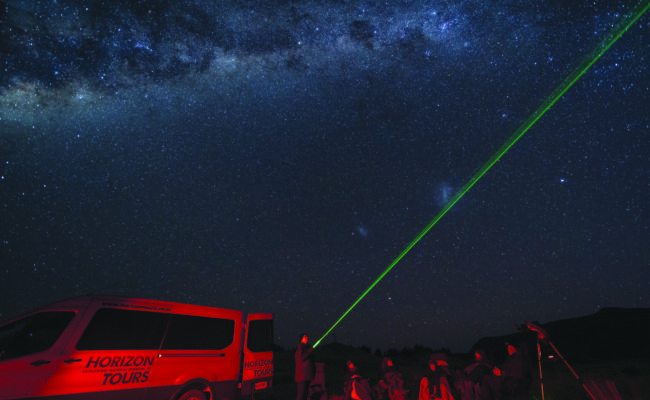
Horizon Tours (Photo: Dunedin NZ)
Only a picturesque flight of 30 minutes from Auckland takes visitors to, in what seems like, another realm altogether. Spread across 4300 sqkm and with minimal light pollution, Great Barrier Island’s pristine, uninhabited dunes make for a particularly stellar setting for stargazing. Beautiful trekking trails wind through the native forest and lead to distant hot springs and an old Kauri dam. Unique, exotic flora and fauna is native to these wilderness areas, foreshores, and estuaries. Hirakimata, rising 627 m, entices hikers with the promise of breathtaking 360° vistas.
However, to keep the beauty of the night sky alive it is vital to mitigate the ill-effects of light pollution. Excessive artificial light at night interferes with the visibility of stars and other celestial objects in the night sky, making it difficult to see or appreciate them. This can be particularly problematic for astrotourism, as visitors may not be able to fully experience and appreciate the beauty of the night sky.








